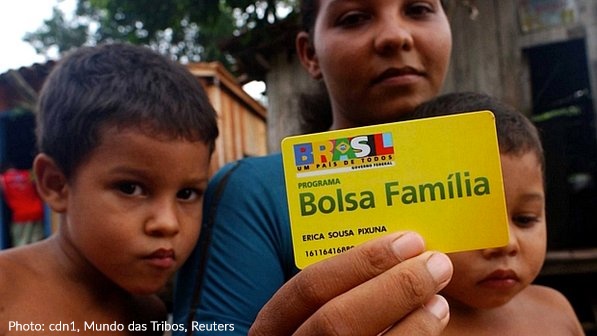RIO DE JANEIRO, BRAZIL – The Bolsa Família (Family Allowance) program reduced extreme poverty rates by a quarter (25 percent) and poverty rates by fifteen percent. The report is from the IPEA (“Institute of Applied Economic Research”) which analyzed the progress of the living conditions of the most impoverished between the years of 2001 and 2017.

“In 2017, the program’s transfers lifted 3.4 million people out of extreme poverty and 3.2 million out of poverty,” states a study published this week and available on the Internet.
Data on the income of the most impoverished were obtained from the National Household Sample Surveys (PNAD/IBGE), which used to be conducted biannually and from 2016 onwards became continuous.
In total, the Bolsa Família transfers resources to 14 million families or 45 million people, a figure equivalent to that of the entire population of Argentina.
For Luiz Henrique Paiva, a public policy expert and one of the study’s authors, the Bolsa Família “is a very effective tool for reducing poverty. It is not more effective because it’s still modest,” he says, referring to the average of R$188 that each family receives.
Paiva acknowledges that the Bolsa Família is very much rooted in the currents of economic liberalism. “The program is in its nature liberal. It focuses on the poorest, transfers modest amounts of money, and costs little to the country (0.4 percent of GDP). Not surprisingly, liberal economists, like Economy Minister Paulo Guedes, appreciate and know the program’s assessments.”
In addition to reducing poverty, the Bolsa Família would have contributed to a ten percent reduction in inequality, as measured by the Gini coefficient, an indicator that measures the gap between the actual and ideal distribution of wealth.
However, Luiz Henrique Paiva concedes that in recent years, after the economic recession, there has been a worsening of the social structure due to unemployment and the program was insufficient to avert this situation.
“When there is a lot of unemployment, there are many people with no income. The Bolsa Família is a complementary program, not a replacement for income,” he says.
He believes that the Bolsa Família will be long-lived. “There is literature on this: social programs that are both effective and far-reaching tend to be resilient and resist over time.”

